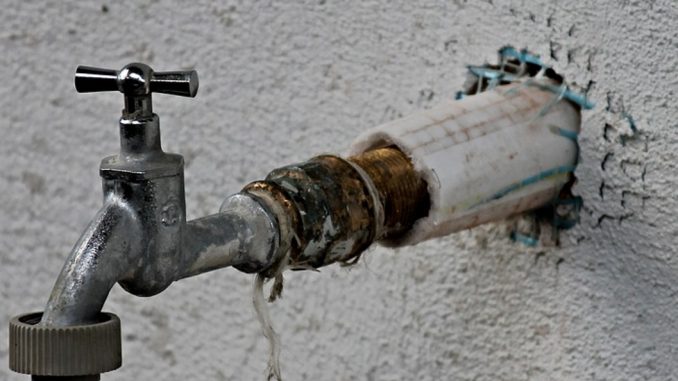
“It’s only a pinhole leak” said the actress to the bishop. How many of us have decided to turn a blind eye to minor problems with our plumbing, ignoring a leaking pipe because the amount of water being lost was so miniscule as to be barely noticeable?
The bad news is that this approach – or non-approach – to fixing a leaking pipe can actually result in huge amounts of a precious resource being lost. This is not good for the environment first and foremost, especially at a time when there are real concerns about water supply in the United Kingdom.
A combination of population increase and climate change means that there is the potential for our taps to run dry before 2050 unless drastic action is taking to preserve water. Ignoring a leaking pipe, however miniscule, contributes to wasting what water we have left.
It is bad news too for home and business owners who allow water to be lost on their watch. Leaking pipes on properties can lead to increased bills unless you can prove you knew nothing about the leak and were not responsible for it – another reason not to ignore the problem.
What starts as a minor leak can soon become a major issue if left untreated. A pinhole leak in a radiator pipe caused by interior corrosion might lead to a burst or crack, causing water damage to floors, carpets and furnishings and requiring an entire system replacement.
Then there is the damage to structures which leaks can cause. Water coming into contact with electrics is obviously a big no. If enough water escapes, then it can rot wood, saturate soil and cause instability to foundations.
All of this might seem dramatic when talking about something like a pinhole leak in a steel or copper pipe. The following figures though show you how even the tiniest of cracks can lose a large amount of water when ignored.
Leave a pinhole leak untreated for a year and it will lose over one million litres of water – 1,363,750 to be precise. It is the equivalent of taking 12,000 baths in a year.
A damaged toilet can be responsible for 344,470 litres of lost water in 30 days. When it comes to a leaking wastewater pipe, leakage levels are normally secondary in the list of issues to the escape of contaminated water.
The importance of rapid emergency pipe repair is shown by what happens when a 3mm hole in a metal pipe is left to leak for 24 hours. At 2.7bar of pressure, such a fault will lose 8,450 litres.
Pipe systems in residential properties in the UK run at pressure of between 1 and 1.5, so such a minor leak in a domestic setting could still lose over 4,000 litres in a day.
Dripping taps are one of the most common plumbing problems around, which also makes them one of the most ignored. A leaking tap or hose connection wastes 680 litres of water a month. Allow the issue to go unrepaired for a year and 8,160 litres are gone.
Perhaps the most astonishing number we have for you is how many homes there are which have a leak. According to research, one in every 300 properties or buildings suffers from a leak at any one point in time. That is a huge amount of water being lost to issues that could be fixed.
Obviously, some of those leaks remain undetected by those who own, live or work in the effected buildings. Discovering a leak is often the hardest part.
You have to spot the signs which indicate you may have a leaking pipe, try and determine where the problem is and then either carry out a DIY pipe repair or if the application is particularly challenging, hire a plumber to do it.
There are no excuses though if you know about a leaking pipe but choose to turn a blind eye. Fixing the problem as soon as possible saves money, prevents costly structural damage and protects the environment. You should never ignore a leaking pipe.

Leave a Reply